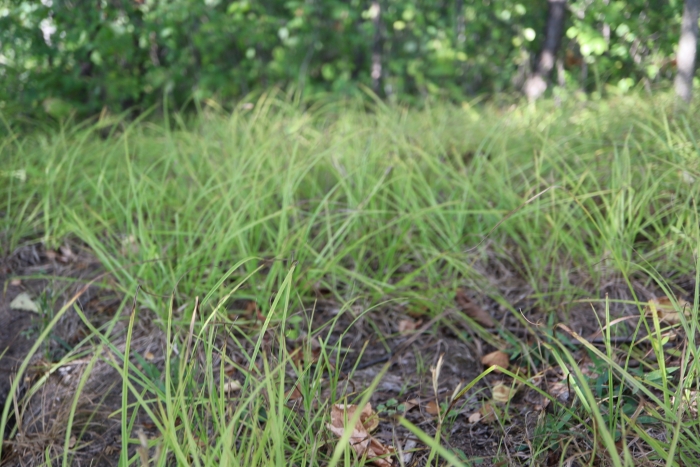Pennsylvania Sedge
(Carex pensylvanica)
Pennsylvania Sedge (Carex pensylvanica)
/
/

© Henry "Nick" Robertson
CC BY-SA 4.0
Image By:
© Henry "Nick" Robertson
Recorded By:
Copyright:
CC BY-SA 4.0
Copyright Notice:
Photo by: © Henry "Nick" Robertson | License Type: CC BY-SA 4.0 | License URL: http://creativecommons.org/licenses/by-sa/4.0/ | Uploader: henrythesick | Publisher: iNaturalist |























Estimated Native Range
Summary
Carex pensylvanica, commonly known as Pennsylvania sedge, is a perennial herbaceous plant native to dry, open woodlands and forest edges in eastern North America, including eastern Canada and the eastern United States. It typically grows up to 18 inches tall and forms dense tufts and mats through cordlike rhizomes. Pennsylvania sedge blooms early in spring with inconspicuous greenish flowers that are not particularly showy. It is well-adapted to a range of soil types, from sandy to loamy, and can tolerate dry conditions once established.
Pennsylvania sedge is valued for its ability to form a low-maintenance, natural-looking ground cover, especially in shaded areas where lawn grasses may struggle. It is often used in woodland gardens, as an understory plant, and for erosion control on slopes. This sedge is also notable for its increased dominance in disturbed habitats, such as those affected by deer herbivory and invasive earthworm activity. While it is non-mycorrhizal, it can outcompete other plants in areas where mycorrhizal networks are disrupted, making it a resilient choice for challenging sites. In cultivation, it requires minimal care, thriving in part shade to full shade and preferring well-drained soils.CC BY-SA 4.0
Pennsylvania sedge is valued for its ability to form a low-maintenance, natural-looking ground cover, especially in shaded areas where lawn grasses may struggle. It is often used in woodland gardens, as an understory plant, and for erosion control on slopes. This sedge is also notable for its increased dominance in disturbed habitats, such as those affected by deer herbivory and invasive earthworm activity. While it is non-mycorrhizal, it can outcompete other plants in areas where mycorrhizal networks are disrupted, making it a resilient choice for challenging sites. In cultivation, it requires minimal care, thriving in part shade to full shade and preferring well-drained soils.CC BY-SA 4.0
Plant Description
- Plant Type: Grass
- Height: 0.1-0.6 feet
- Width: 0.1-1 feet
- Growth Rate: Moderate
- Flower Color: N/A
- Flowering Season: Spring
- Leaf Retention: Semi-deciduous
Growth Requirements
- Sun: Full Sun, Part Shade, Full Shade
- Water: Low, Medium
- Drainage: Fast, Medium
Common Uses
Bird Garden, Deer Resistant, Drought Tolerant, Erosion Control, Groundcover, Low Maintenance, Street Planting
Natural Habitat
Dry, open woodlands and forest edges
Other Names
Common Names: Early Sedge , Common Oak Sedge , Oak Sedge
Scientific Names: Carex pensylvanica , Carex marginata , Carex marginata , Carex pensylvanica f. androgyna , Carex pensylvanica f. androgyna , Carex pensylvanica f. bracteata , Carex pensylvanica f. glumabunda , Carex pensylvanica f. gracilifolia , Carex pensylvanica f. latifolia , Carex pensylvanica f. paleacea
GBIF Accepted Name: